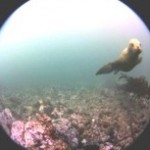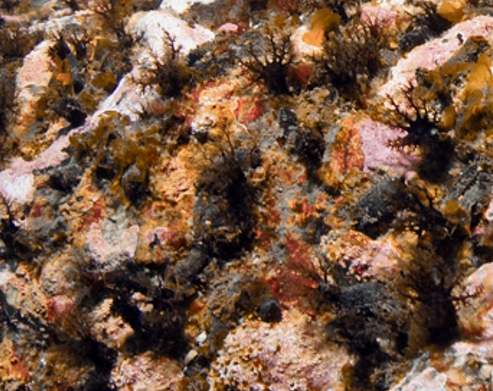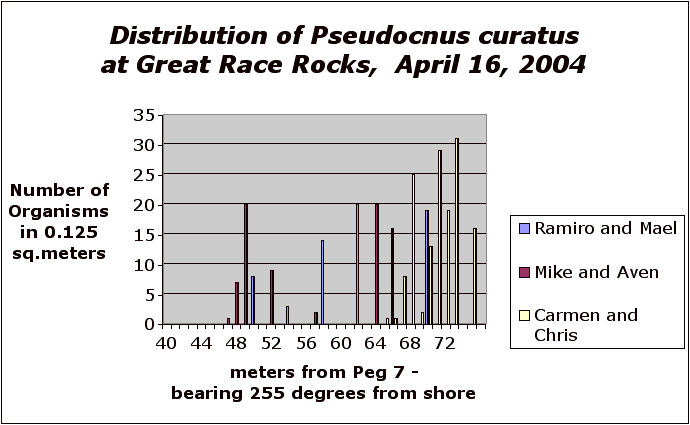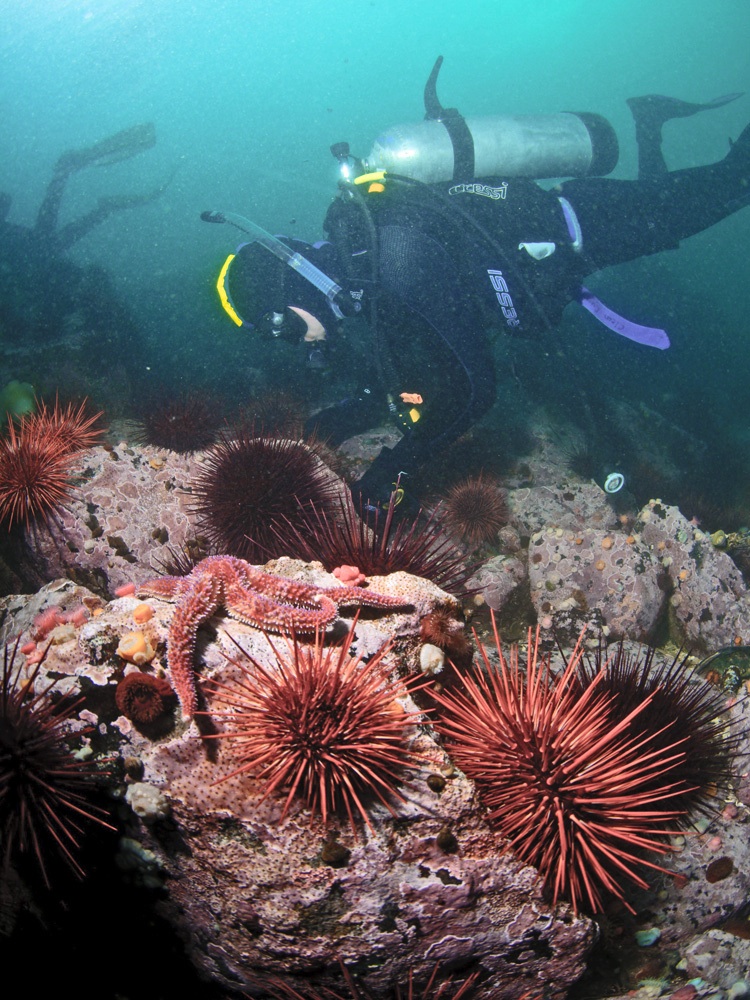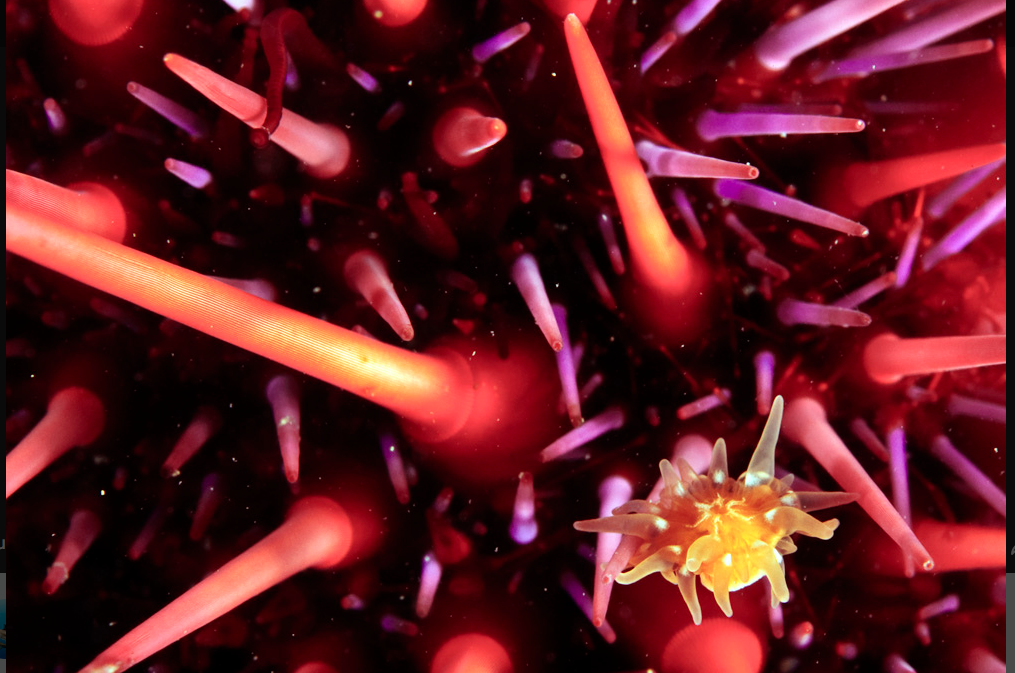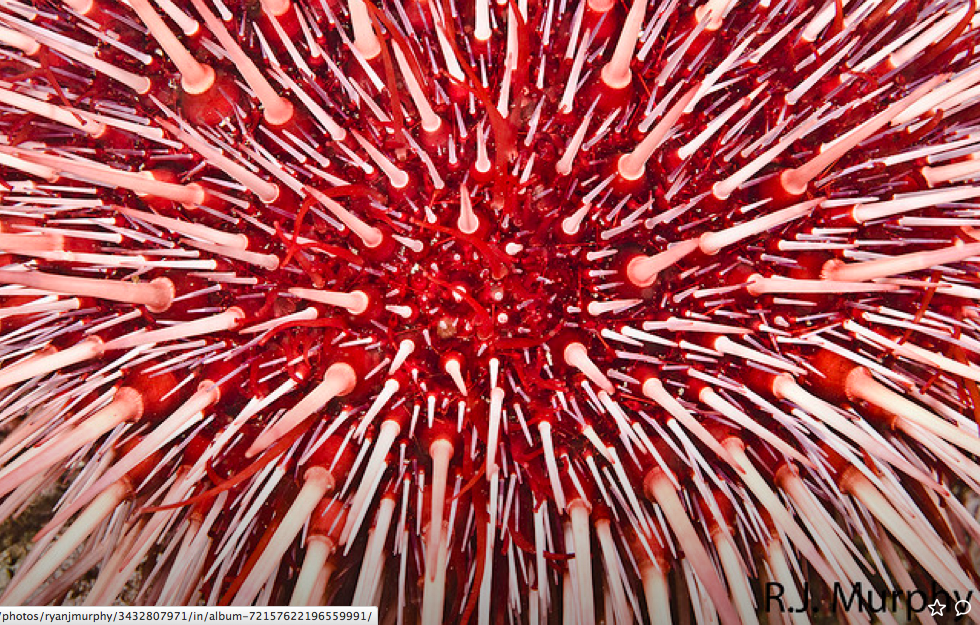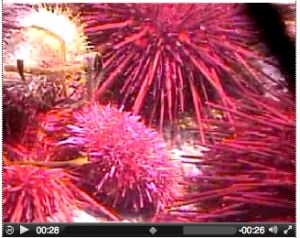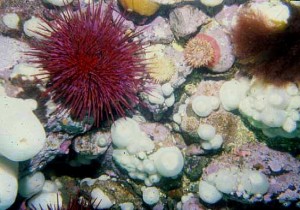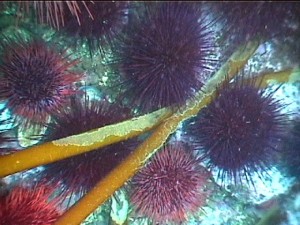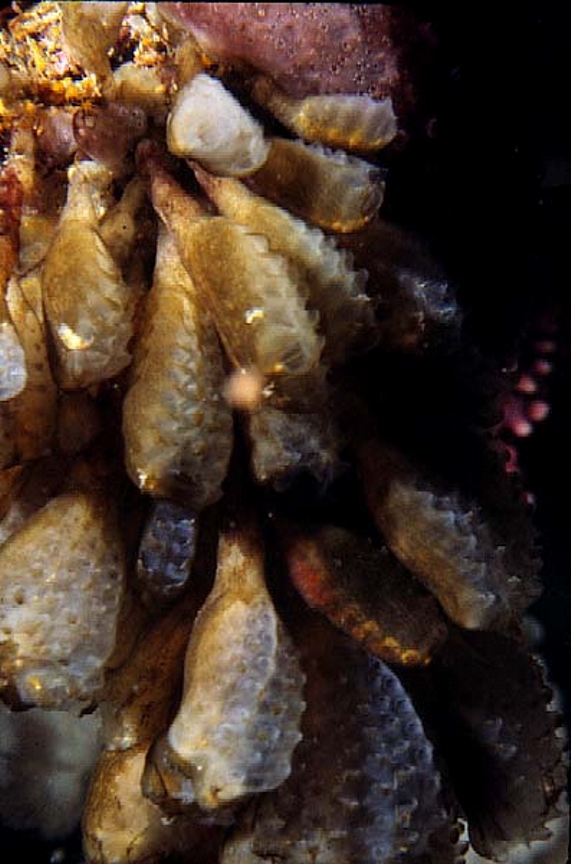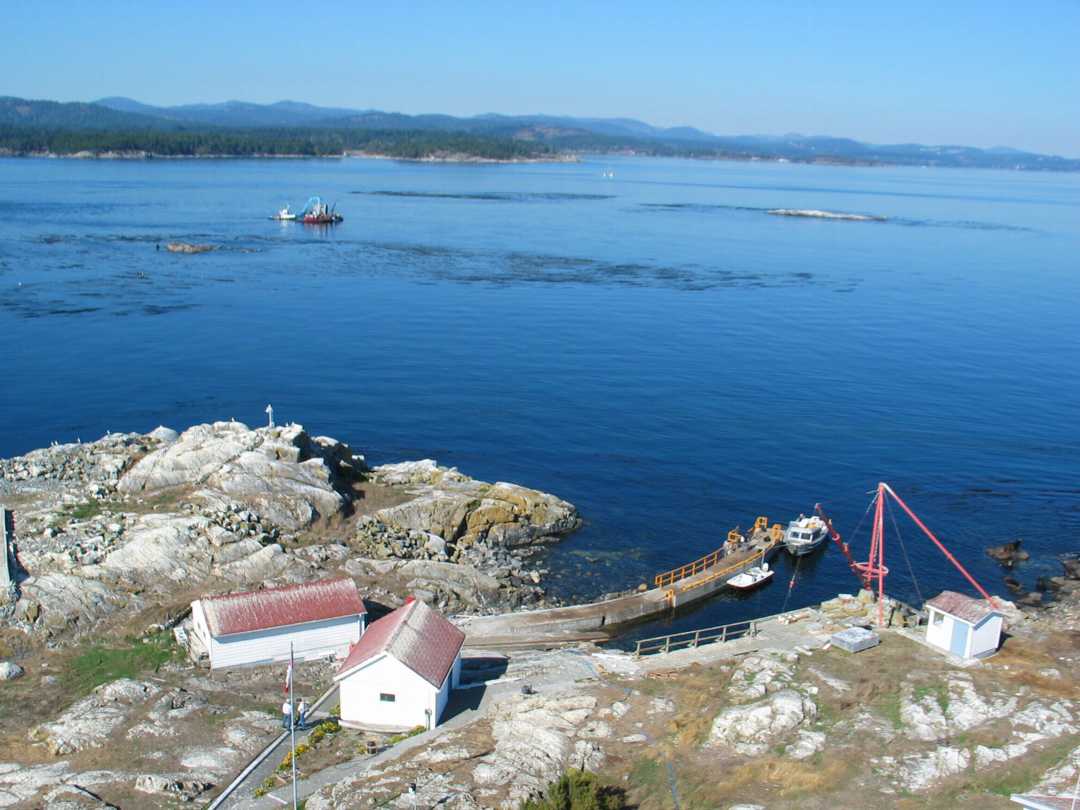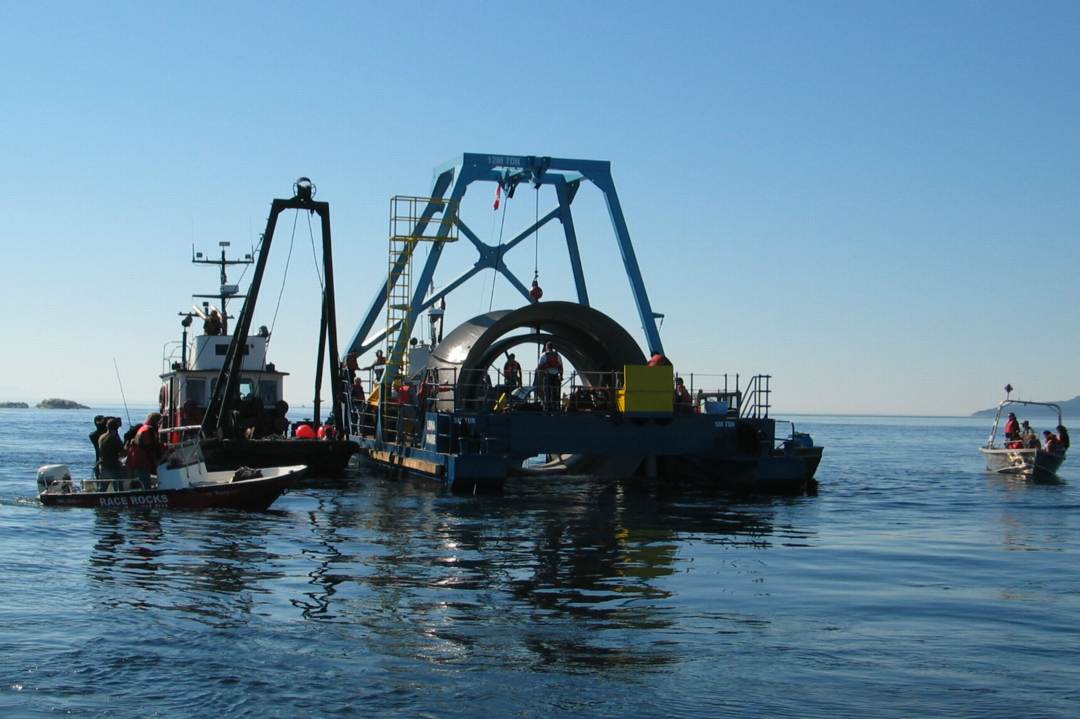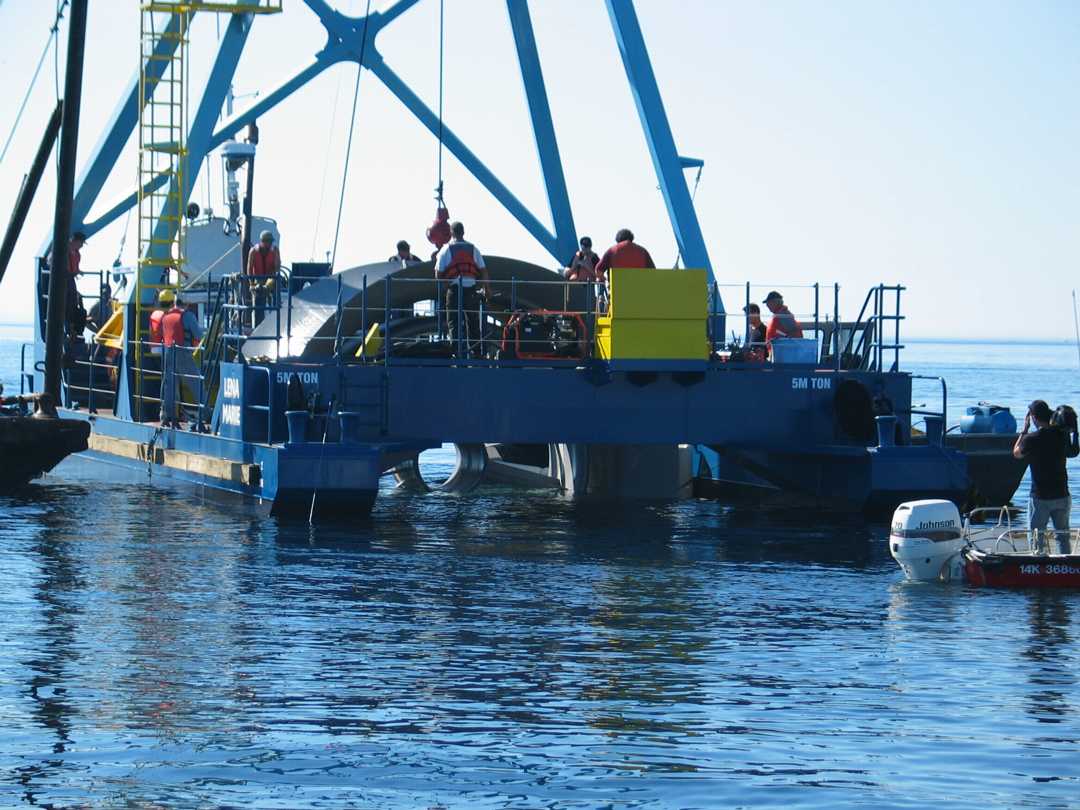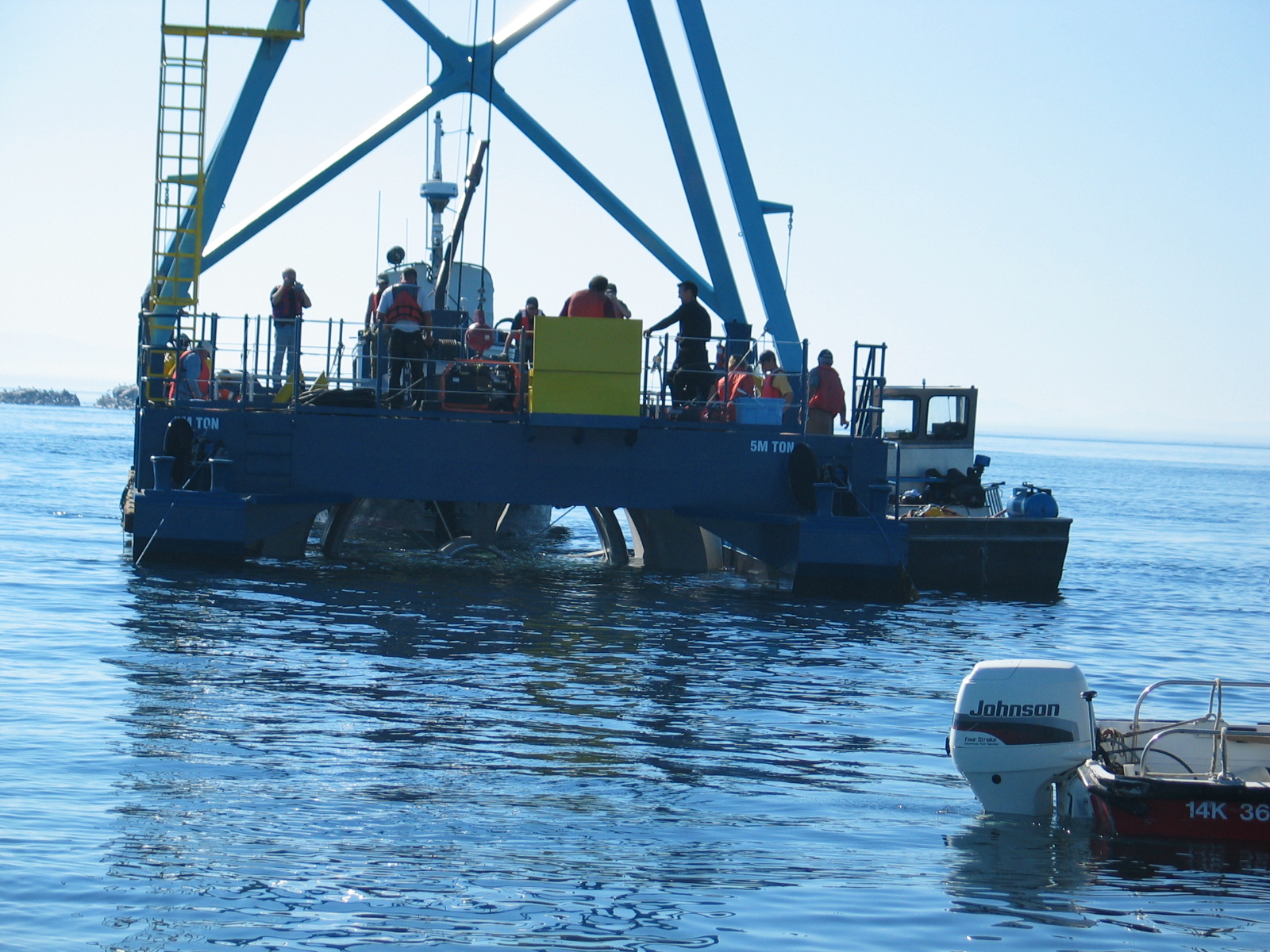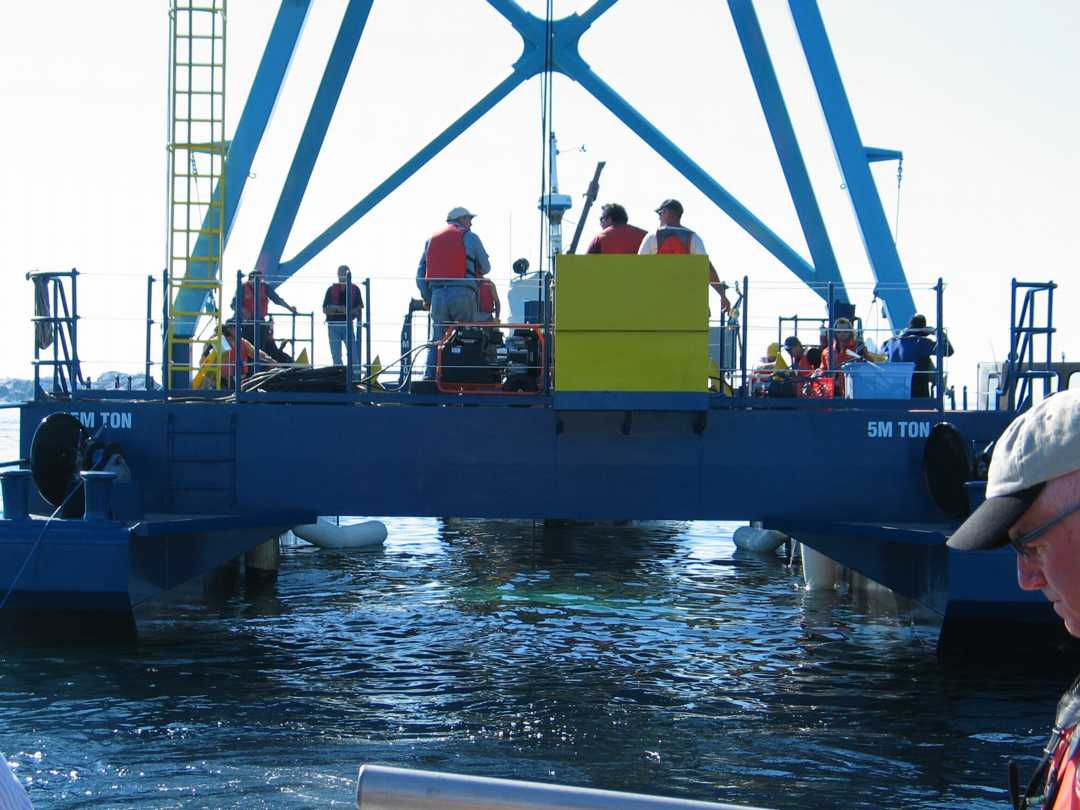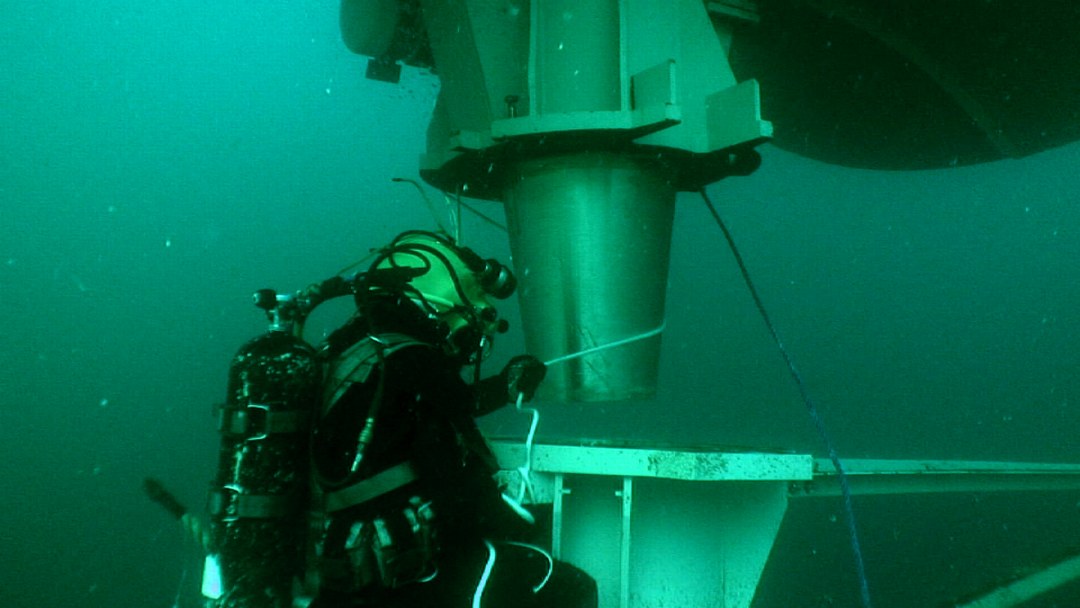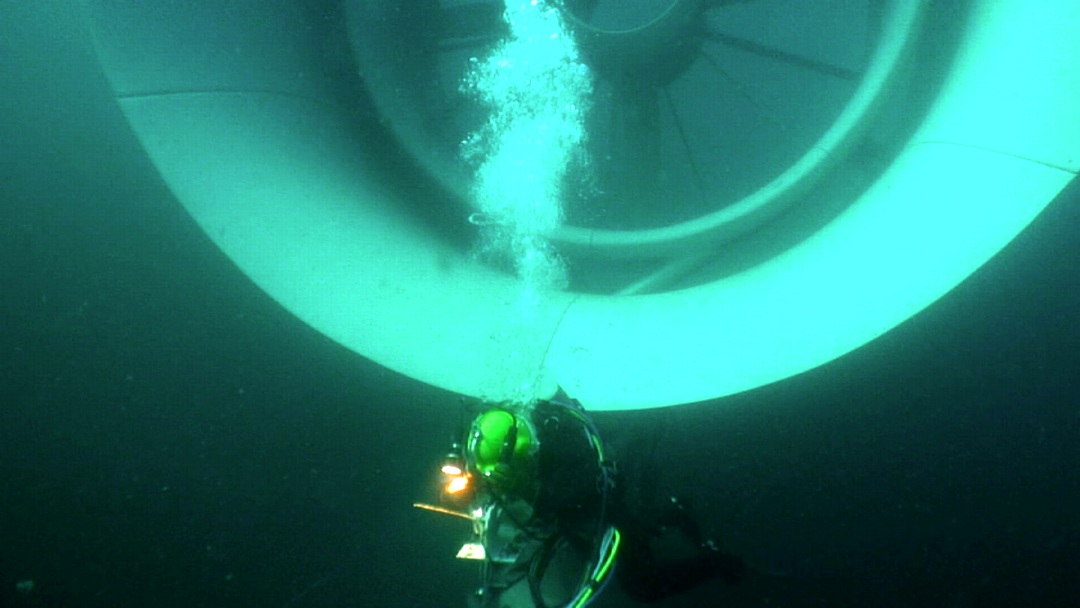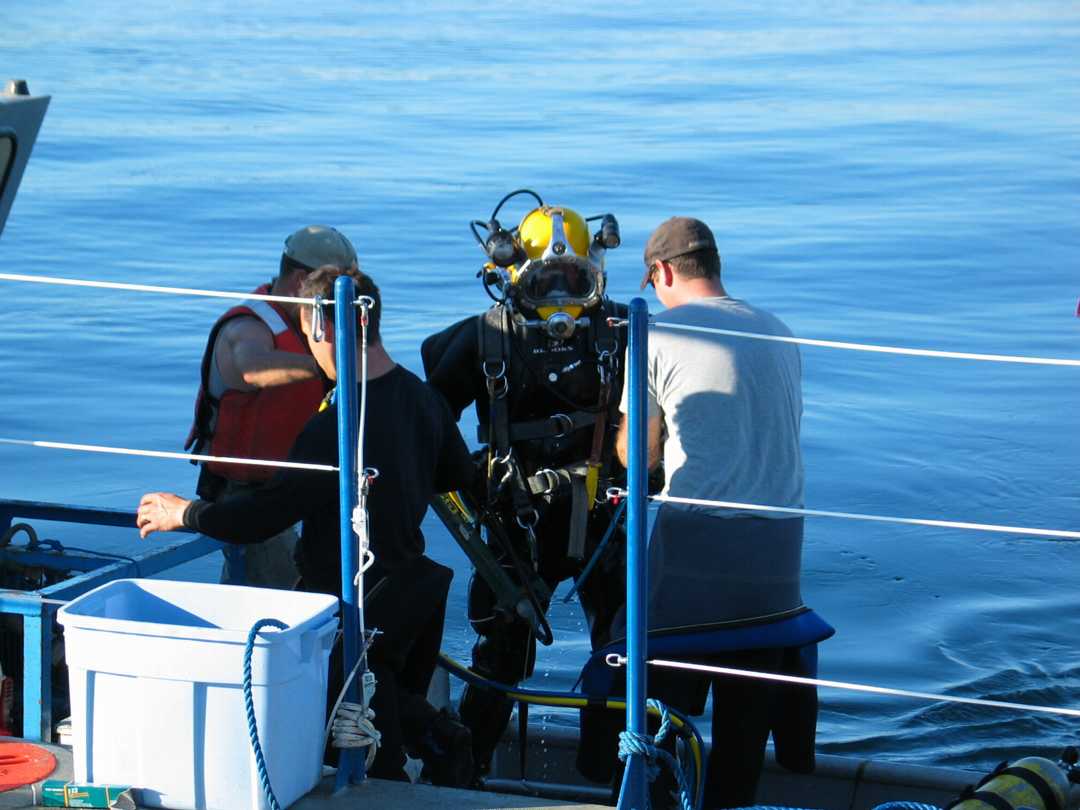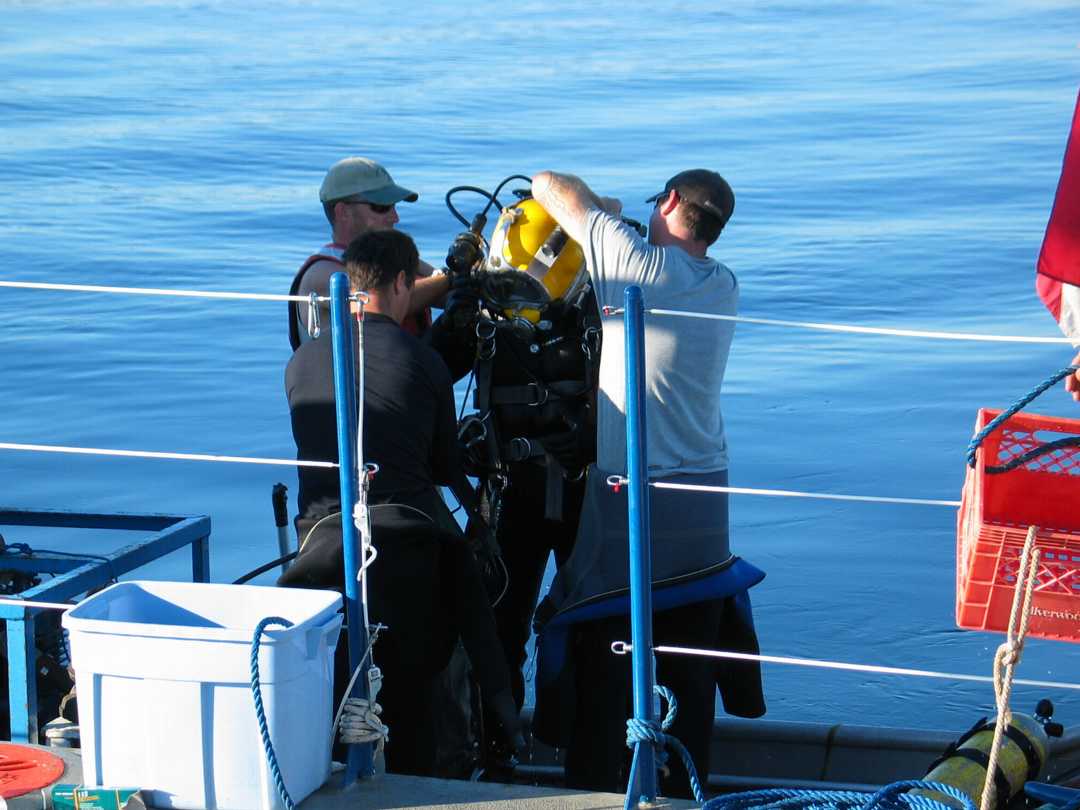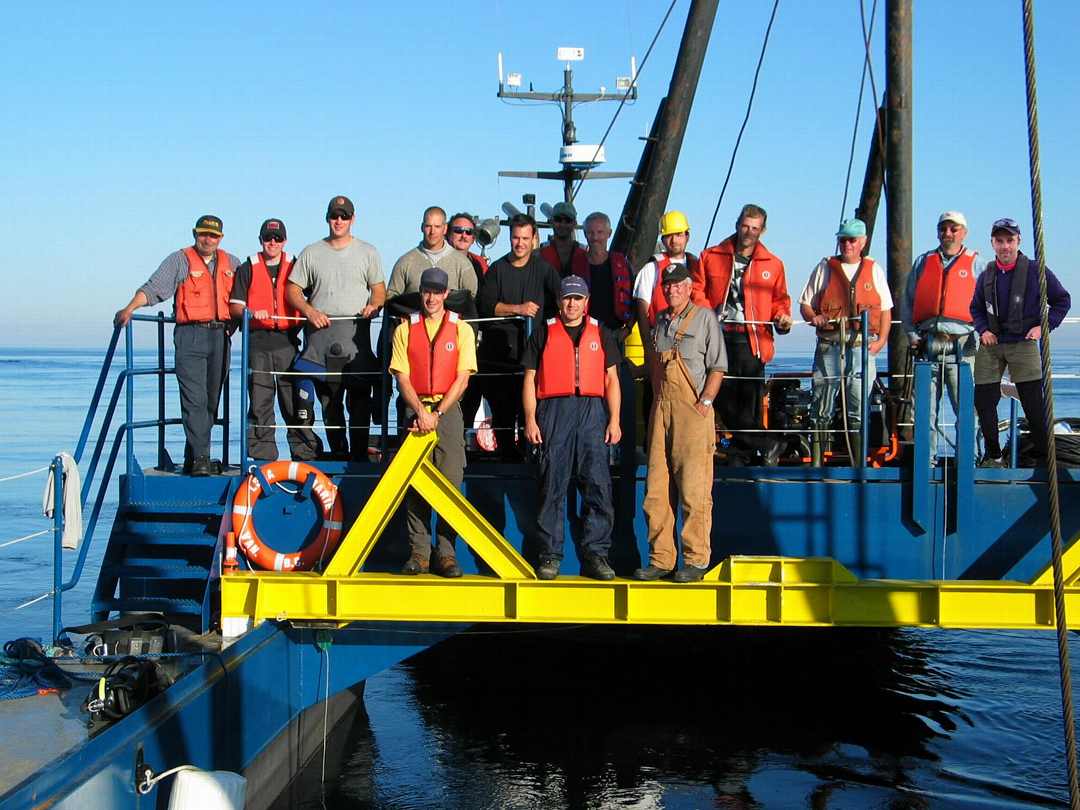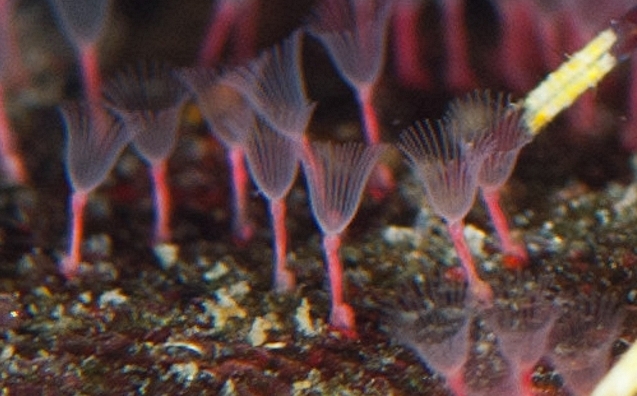 On October 24, 2011, Ryan Murphy took a picture of a coonstripe shrimp (you can see part of its yellow leg showing in this blow-up). In his photo background, he also captured by chance the first record of this species for the Race Rocks Taxonomy files. See this file explaining the significance of this find.
On October 24, 2011, Ryan Murphy took a picture of a coonstripe shrimp (you can see part of its yellow leg showing in this blow-up). In his photo background, he also captured by chance the first record of this species for the Race Rocks Taxonomy files. See this file explaining the significance of this find.
Category Archives: Underwater
Image page for Underwater Camera
We just put up this new image page for the underwater camera. We invite observers to contribute screencaptures of any new /unusual images that they may happen to capture on the uw camera.
California Sea Lions
California Sea Lioncount: 87. Most of the California sea lions cleared out this morning before I could get a proper count. LGL continues to monitor the DND blasting. Brand c867 is near the jetty this morning.
LGL continues their monitoring today.
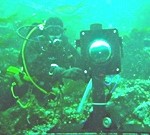 Erik and Evgeny arrived to work on the underwater camera. I am very excited for this to be online. In just a few seconds of watching I’ve seen 4 species of fish and a couple sea lions swim by. There were 4 visitors to the island today.
Erik and Evgeny arrived to work on the underwater camera. I am very excited for this to be online. In just a few seconds of watching I’ve seen 4 species of fish and a couple sea lions swim by. There were 4 visitors to the island today.
maintenance work
At 1111hrs PDT a Prince of Whales vessel was spotted entering the Reserve at high speed in close proximity to West Race.
A CCG helicopter did a reconnaissance flight around the tower this morning.
Erik and Evgeny arrived to install the cable for the new underwater camera. Two techs from Environment Canada arrived to work on their weather equipment.
There were 4 visitors to the island today
California Sea Lion: 8
Eco tour traffic
| California Sea Lion: 7 # of sealions at the NE haul out (first of a series of daily reports). |
Saw an abalone for the first time in 3 years while on a dive today. |
Human Interaction
At 0829hrs PDT a floatplane flew under 1000 ft from E to W over Rosedale Reef.
A pod of orcas passed through Race Passage (W to E) this afternoon. At one point, at least 15 whale watching vessels were in pursuit. Subsequently, heavy eco-tour traffic was experienced in the Reserve this afternoon. Most vessels respected established guidelines, but there were a few notable exceptions:
1. Birds of a Feather approached within 100 metres of California sea lions hauled out near the jetty. The sealions did not upset as there was already activity on the jetty.
2. A vessel from Seaquest based out of Sidney was observed speeding into the east side of the Reserve, well within the limits of the 7 knot speed restriction, then later observed speeding out in the same direction.
3. Several other vessel were observed speeding within the boundaries of the Reserve, either to obtain a better vantage point for viewing whales or to shorten travel time to the whales once the whales had moved well past Race Rocks.
Luke came out to RR to dive this afternoon with Adam to help take measurements of the materials testing platform and for pleasure. Erik and Hao also arrived as did a contact from \”The Big Blue Technologies\” of Victoria and his two young kids.
There were 6 visitors to the island today.
Nereocystis luetkeana- Videos of Kelp
Kelp and color. At the end of a live underwater video session, I inadvertently left the camera “on while I was waiting in the kelp bed off the jetty at Race Rocks Ecological Reserve. It was a sunny day and the effects created by the sunlight streaming through the canopy of the forest gave this interesting effect.” GF-2003
Note: The video pauses on each clump in order to have a better view.
When Race Rocks was declared Canada’s first Marine Protected Area, Holly Arntzen offered Pearson College the opportunity to use some of her songs as video backgrounds. Her CD entitled “The Salish Sea” is about the fading beauties of the oceans and it stresses the importance of their protection.
Using the song “Saltwater” as a background, this video shows images of divers and the bull kelp, Nereocystis leutkeana, a species of brown algae present in high density throughout the summer and fall at Race Rocks. Their lamina provide a special protective canopy for a delicate ecosystem with many species of invertebrates and fish under their canopy. This video was filmed and edited by Jean-Olivier Dalphond (PC yr26) and Damien Guihen (PC yr27) in June 2001.
Pseudocnus curatus: Black brooding sea cucumber–The Race Rocks Taxonomy
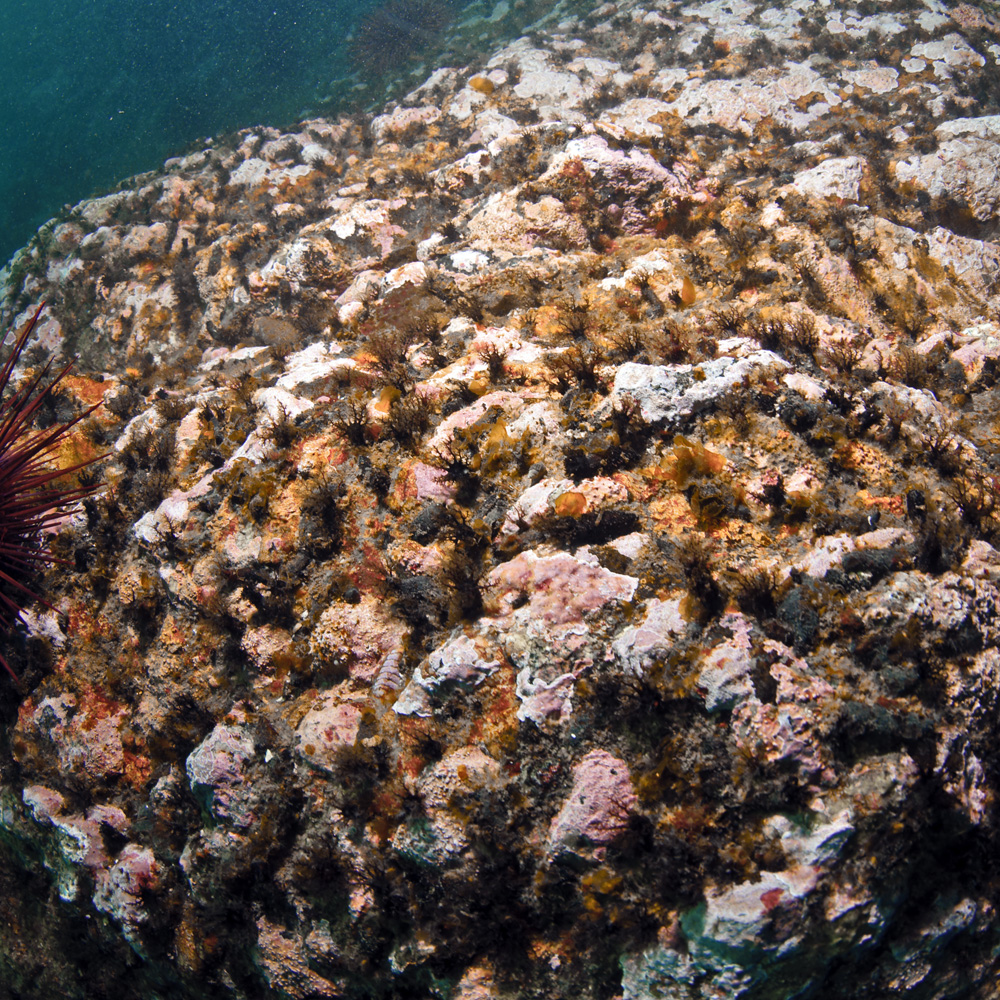 by Ryan Murphy, April, 2010 See Ryan’s underwater set on Flickr with a range of invertebrates: by Ryan Murphy, April, 2010 See Ryan’s underwater set on Flickr with a range of invertebrates:
In the early 1980’s while doing subtidal surveys, we discovered a major concentration of the small subtidal sea cucumber Pseudocnus curatus ( formerly Cucumaria pseudocnus) living in high density off the West side of Great Race Rocks. On April16, 2004, six divers, Ramiro, Mael, Mike, Carmen, Aven and Chris were able to do a preliminary survey of the area and have produced the results shown here.
Domain Eukarya POPULATION DISTRIBUTION at RACE ROCKS
|
||||||||||||||||||||||||||||||||||||||||||||||||||||||||||||||||||||||||||||||||||||||||||||||||||||||||||||||||||||||||||||||||||||||||||||||||||||||||||||||||||||||||||||||||||||||||||||
Strongylocentrotus franciscanus :Giant red urchin–Race Rocks taxonomy
From the underwater albums of Ryan Murphy- photographed when he was an Ecoguardian at Race Rocks.
https://www.flickr.com/photos/ryanjmurphy/sets/72157622196559991
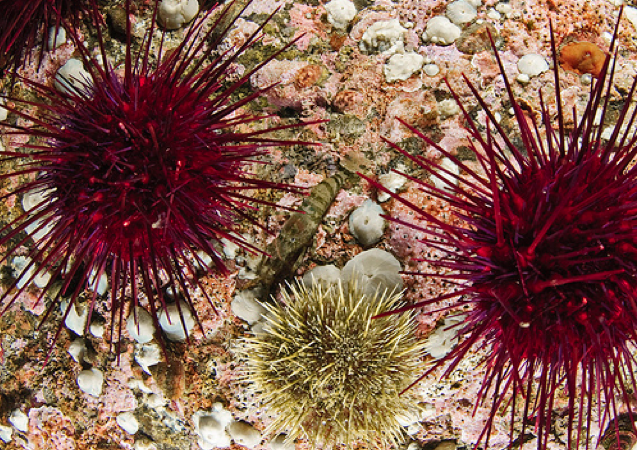
Giant red urchin Strongylocentrotus fransciscanus and Green urchin Strongylocentrotus droebachiensis
Usually, they eat red or brown algae (see in the photograph they have eaten pieces of the kelp Nereocystis), periwinkles, and occasionally barnacles or mussels.
Distribution; rocky areas though at exposed and protected coastal waters.
Habitat: Rocky substrates, especially ledges and crevices located near bull kelp beds and other brown algae in area of moderate to swift currents. Larvae drift and feed in plankton, juveniles settle near kelp bed, often associate with aggregation of adults, remain under adult spines until they reach 40mm.
Behavior: The red sea urchin is found in deeper water than the purple sea urchin. It is seen from the low intertidal area to as deep as 90 meters. The urchins move their feet by a hydraulic system which creates suction in the end of the food by pulling water out the madroporite. These tube feet may also be used to sense of smell the chemicals in their surroundings like others urchins, the red sea urchin can regrow its spines if they are broken. On full size urchins, these spines sometimes shelter small juveniles.
Reproduction: The spawning of red sea urchin peaks between, June and September in southern BC. The fertilized eggs develop into planktonic larvae before settling on the bottom where they change into tiny juvenile sea urchins. This replenishment of the population, appears to occur annually in local waters. New recruits must hide from potential predators and many seek shelter under the spines of adult . Adulthood is at approx. 3cm diameter and legal size of 10cm is reached in five to ten years. Life span sometimes exceeds 30 years.
People eat the gonads (sexual organs, called “UNI”) of this urchin. It is especially a delicacy in Japan and others parts of Asia. Sunflower stars, some fish, birds, and sea otters also prey on them.
This pdf is on the DFO Integrated Fisheries management Plan for the Red urchin:
DFO-red_urchin_2011-12 “The purpose of this Integrated Fisheries Management Plan (IFMP) is to identify the main objectives and requirements for the Red Sea Urchin fishery in the Pacific Region, as well as the management measures that will be used to achieve these objectives. This document also serves to communicate the basic information on the fishery and its management to Fisheries and Oceans Canada (DFO) staff, legislated co-management boards and other stakeholders. This IFMP provides a common understanding of the basic “rules” for the sustainable management of the fisheries resource.”
Scientific classification
Kingdom: Animalia
Phylum: Echinodermata
Class: Echinoidea
Order: Echinoida
Family: Strongylocentrotidae
Genus: Strongylocentrotus
Species: S. franciscanus
Other Members of the Phylum Echinodermata at Race Rocks.
and Image File |
 The Race Rocks taxonomy is a collaborative venture originally started with the Biology and Environmental Systems students of Lester Pearson College UWC. It now also has contributions added by Faculty, Staff, Volunteers and Observers on the remote control webcams. Original arrangement was by Ainhoa Orensanz PC Year 28, Feb 2002 The Race Rocks taxonomy is a collaborative venture originally started with the Biology and Environmental Systems students of Lester Pearson College UWC. It now also has contributions added by Faculty, Staff, Volunteers and Observers on the remote control webcams. Original arrangement was by Ainhoa Orensanz PC Year 28, Feb 2002 |
Distaplia smithi
This video was taken in the lab:
A general view of the habitat of this ascidian in the high current area near the tidal current turbine.
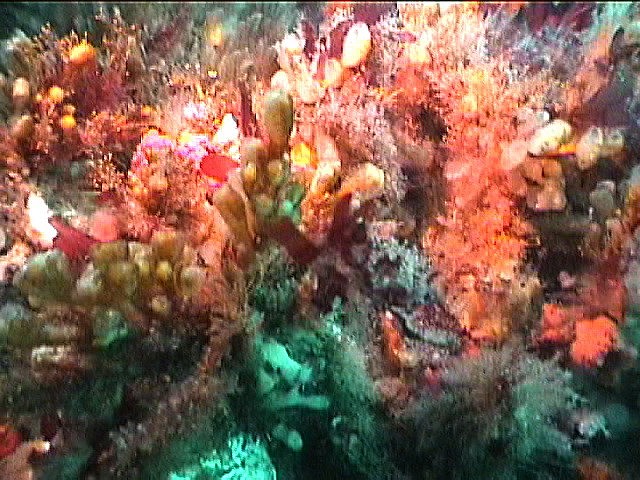
A general view of the habitat of this ascidian in the high current area near the tidal current turbine.
Domain Eukarya
Kingdom Animalia
Sub-Phylum Urochordata
Class Ascidiacea
Order Enterogona
sub order Aplousobranchia
Family Claveliidae
Genus Distaplia
Species smithi
Common Name:Club Tunicate
II took this picture the first time I encountered this ascidian when diving at Race Rocks. I had no idea what kind of organism it was at the time .. I referred to it as a grape ascidian .. GF
| Other Members of the subphylum Urochordata at Race Rocks |
and Image File |
 The Race Rocks taxonomy is a collaborative venture originally started with the Biology and Environmental Systems students of Lester Pearson College UWC. It now also has contributions added by Faculty, Staff, Volunteers and Observers on the remote control webcams. The Race Rocks taxonomy is a collaborative venture originally started with the Biology and Environmental Systems students of Lester Pearson College UWC. It now also has contributions added by Faculty, Staff, Volunteers and Observers on the remote control webcams.
October 2006- Garry Fletcher |
Installation of the tidal Current Generator at Race Rocks, Sept, 2006
- September 27 2006 was a calm day as the crew positioned the turbine for installation
- The lowering of the turbine begins.
- Half way into the water
- A day of minimum tides had been chosen. One of the few in September.
- Submerged.
- The turbine is lowered about 8 meters to mate up with the top piling.
- Underwater, Can Pac diver Brian has the job of lining it up with the hole on the top piling and tightening attachment. A camera on his helmet guides the positioning of the barge above.
- The bottom of the turbine after installation.
- Brian returning to the surface.
- The hard-hat is quickly removed
- And a big smile denotes success in a successful mission.
- The Clean Current crew and the group picture afterwards.

